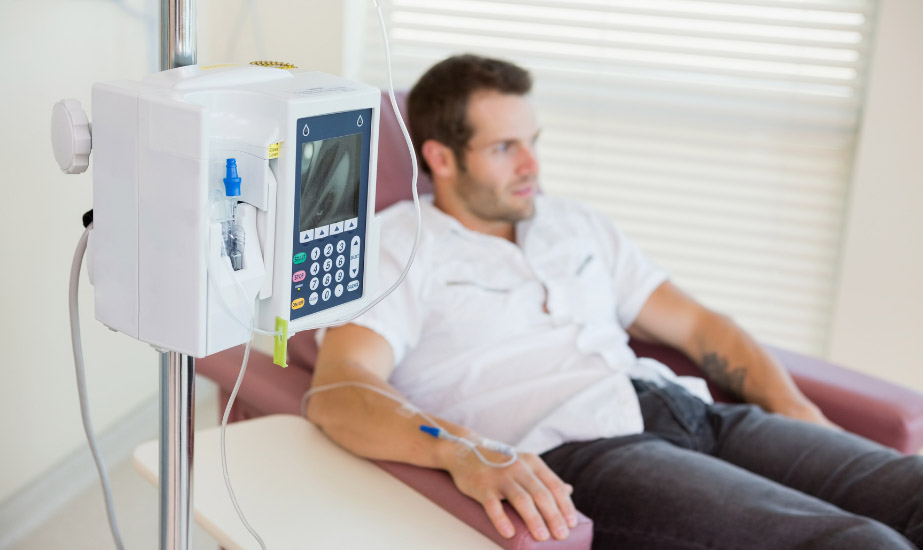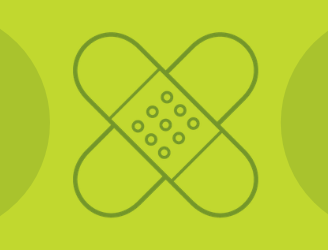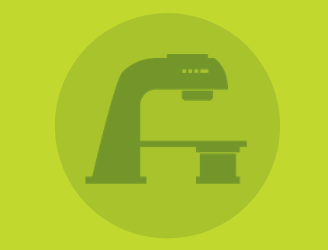Chemotherapy (chemo)
Chemotherapy (chemo) is a treatment that uses anti-cancer drugs to destroy cancer cells, including leukaemia and lymphoma cells. You may have one chemotherapy drug, or you may have more than one. When you are treated with two or more chemotherapy drugs, doctors call it combination chemotherapy.

The type of chemotherapy you will have depends on:
- the type of cancer you have
- the risk of the cancer coming back
- whether the cancer has spread.
- Doctors often use chemotherapy with surgery and radiotherapy.
It can also be used with targeted therapies and hormonal therapies. We have information about targeted therapies and hormonal therapies that is written for people of all ages, not just teenagers and young adults.
Doctors use chemotherapy in different ways:
- As the main treatment for cancers such as lymphoma and leukaemia.
- Before surgery or radiotherapy, to shrink a cancer and make it easier to treat.
- After surgery or radiotherapy, to reduce the risk of a cancer coming back.
- At the same time as radiotherapy, to make that treatment work better. This is called chemoradiation.
- To try to control the cancer and reduce any symptoms.
How does it work
Chemotherapy works by killing cancer cells when they are dividing and growing. Most chemotherapy drugs travel through the blood. This means that they can reach cancer cells anywhere in the body. Different chemotherapy drugs work in different ways. Doctors often use a combination of chemotherapy drugs.
Chemotherapy also affects healthy cells when they are dividing and growing. This is what causes side effects. These side effects usually go away when treatment ends, but sometimes side effects can happen after treatment.
Being treated with chemotherapy
Your chemotherapy plan
Your doctors will follow a chemotherapy plan for your treatment. They usually give chemotherapy in cycles. In a chemotherapy cycle, you will have one or more days of chemotherapy followed by rest days without chemotherapy. The rest days allow your body to recover from the side effects of chemotherapy.
Your doctor or chemotherapy nurse will tell you how many cycles you are likely to need and how long you will have chemotherapy for. This makes up your chemotherapy plan.
Being treated with chemotherapy
The most common way to have chemotherapy is directly into a vein. You can have it through:
- a cannula
- a central line
- a PICC line
- an implantable port (portacath).
Having a line or port put in
A cannula is taken out after each treatment or before you go home. A line or portacath (port) can stay in until your chemotherapy is over. If you have a line or port, nurses can also take blood samples from it. This means you won’t need a needle put in your arm each time you have blood taken. Your nurse will show you how to look after your line or port.
Cannula
A cannula is a short, thin tube that your nurse or doctor puts into a vein in your arm or the back of your hand. Having the cannula put in can be a bit uncomfortable, but it does not usually take long. Your nurse may put some anaesthetic cream or spray onto your skin to numb the area first. Once the cannula is in place, your nurse will cover it with a clear dressing to make sure it stays in.
Central line
A central line is a long, thin, flexible tube that your doctor puts through a cut in the skin of your chest into a vein. The end of the line will be on the outside of your chest, but your clothes will cover it.
Central lines are sometimes known by their brand names. You might hear your nurse calling it a Hickman® line or Groshong® line.
Before a central line is put in, you have a local anaesthetic to numb the area. Some people will have a general anaesthetic (you are asleep and can’t feel anything). Your doctor or nurse will explain what is going to happen so that you know what to expect.
The doctor will make a small cut in the skin near your collarbone and thread the tip of the line into a large vein just above your heart. They then make a small cut lower down on your chest. They will tunnel the other end of the line under the skin to reach this cut on your chest. This is where the line will come out of your body, called the exit site. They will close the cut near your collar bone and put a dressing over it. They will then put a stitch around the line and into your chest at the exit site. This holds the line in place. You will have a chest x-ray to make sure that the line is in the right position.
There is a small cuff around the central line, close to where it comes out of your chest. You can feel this as a bump just under the skin. Over about three weeks, the tissue under your skin grows around the cuff and holds the line safely in place. After this, a nurse will take the stitch out.
PICC line
PICC stands for peripherally inserted central venous catheter. A PICC line is a long, thin, flexible tube that your nurse or doctor puts into a vein above the bend in your elbow.
Before a PICC line is put in, your nurse or doctor will give you some local anaesthetic to numb the area. They will then gently thread the line up through the vein, until the tip of the tube is in a vein near your heart. Once it is in place, you will have a clear dressing put over the PICC line to keep it in place.
Implantable port (portacath)
An implantable port is a thin, soft, plastic tube with a rubber disc (port) at the end. It can be put in under a general or local anaesthetic. The doctor will insert the tube into a vein until its tip sits just above your heart. The port lies under the skin on your upper chest. Once it is in place, you can feel and see the port as a small bump underneath the skin of your chest, but nothing shows on the outside of your body.
Your nurse will put a special needle called a Huber needle through your skin and into the port when giving you treatment. The skin over the port can be numbed with an anaesthetic cream first.
Looking after your line or port
The nurses will show you how to take care of your line or port. It might be difficult at first, but most people get used to it quickly.
The line or port will have to be flushed. This is done with a syringe and a small amount of fluid that is injected into the line or port. It usually needs to be done once a week to stop the line getting blocked. Your doctor or nurse may teach you to do this, or a district nurse can come to your home to do it.
You can have showers or baths, but make sure you keep your skin dry where the tube goes in. Your nurse will give you advice on how to stop it getting wet.
You also need to know how to recognise if anything is wrong with your line or port. This is so any problems with the line can be treated as soon as possible.
Possible problems
Most people will not have serious problems with their line or port. The main problems to look out for are blockages and infections. Contact the hospital straight away and talk to your doctor or nurse if you have any of the following:
- reddening, darkening or soreness of the skin around the line or port
- a high temperature – this could be over 37.5°C (99.5F), depending on the advice given by your chemotherapy team
- feeling shivery or unwell after your line or port has been flushed
- fluid leaking from the skin around the line or port
- pain or swelling in your chest, arm or neck.
If the port or line is infected, your doctor will give you antibiotics straight away to treat it.
If the line or port gets blocked because of a clot, your nurse or doctor will inject drugs into it to help dissolve the clot.
Sometimes they may have to remove the line or port because of an infection or clot.
Having the line or port taken out
When you have finished treatment and you no longer need the line or port, your doctor or nurse will remove it. When they do this, they usually give you a local anaesthetic to numb the area around it. If you are worried about having it removed, you can have some medicine to help you feel more relaxed (a sedative).
Your doctor or nurse will clean the area around the line or port. They will then make a small cut in your skin and gently remove the line or port. This does not hurt, and won’t take long. You will be able to go home once you have recovered.
Having chemotherapy into a vein
Chemotherapy can be given into a vein:
- As an injection directly into your cannula, line or port. Sometimes you have it with a drip (infusion) to flush the drugs into the vein.
- As a drip. The chemotherapy drugs are in a bag of fluid. This is attached to tubing connected to your line, port or cannula. When chemotherapy is given this way, it is often given through a pump. The nurses hang the bag and set the rate on the pump for the drugs to go through at. The treatment can last from 20 minutes to a few hours.
- Through a small syringe pump attached to your line. The chemotherapy is in a syringe in the pump. The pump can fit into a pocket, or you can carry it in a bag or belt. A nurse sets it to give your chemotherapy over a few days. This means you can go home with it. The nurses will show you how to look after it.
If some types of chemotherapy drug leak outside of the vein, they can damage tissue around the vein. This rarely happens with a line or port, but it can happen if a cannula is not positioned in the vein correctly.
If you notice any swelling, pain, stinging or redness around the cannula, line or port during your treatment session, tell your nurse immediately. If any of these problems develop after you get home, contact your chemotherapy nurse or hospital doctor straight away.
Allergic reaction
Some people have an allergic reaction while having this treatment. Before treatment, you will be given medicines to help prevent or reduce any reaction.
Signs of a reaction can include:
- feeling hot or flushed
- a skin rash
- itching
- shivering
- feeling dizzy
- a headache
- feeling breathless
- swelling of your face or lips
- pain in your back, tummy or chest.
Your nurse will check you for signs of a reaction during your treatment. If you feel unwell or have any of these signs, tell them straight away. If you do have a reaction, it can be treated quickly.
Sometimes a reaction can happen a few hours after treatment. If you develop any signs or feel unwell after you get home, contact the hospital straight away.
Having chemotherapy as tablets or capsules
Some chemotherapy drugs are taken as tablets or capsules. After you swallow them, the drugs are absorbed into your blood and carried around your body.
Your doctor or nurse will tell you when to take the drugs. They will also tell you whether you need to take them with food and how to store them safely.
It is important to:
- take them exactly as prescribed
- tell your hospital nurse or doctor if you cannot take your tablets for any reason.
Having chemotherapy injected into the spinal fluid
Having chemotherapy injected into the fluid around the spinal cord is called intrathecal chemotherapy. This fluid is called cerebrospinal fluid (CSF).
In some cancers of blood cells, such as some lymphoma and leukaemia and in certain brain tumours, cancer cells can pass into the CSF. To stop this happening, or to treat it if the cells have spread, chemotherapy can be given directly into the CSF.
Your doctor or nurse will explain what is going to happen so that you know what to expect. They will make sure you are comfortable, and you can have a relative or friend with you.
You lie on your side with your legs drawn up, or you sit up and bend over a table, supported by a pillow. Your doctor will give you a local anaesthetic to numb an area of skin over your lower spine. They will then put a needle into the space between two of the bones in your spine and into the CSF. Then they will inject the chemotherapy through the needle and into the CSF.
This is not usually painful, but some people find it uncomfortable. The most common side effect is a headache that can last for several hours. To help prevent this, you need to lie flat for a while after the treatment and drink plenty of fluids. Your doctor or nurse will tell you how long to lie down for. They will also tell you which painkillers to take if you get a headache.


